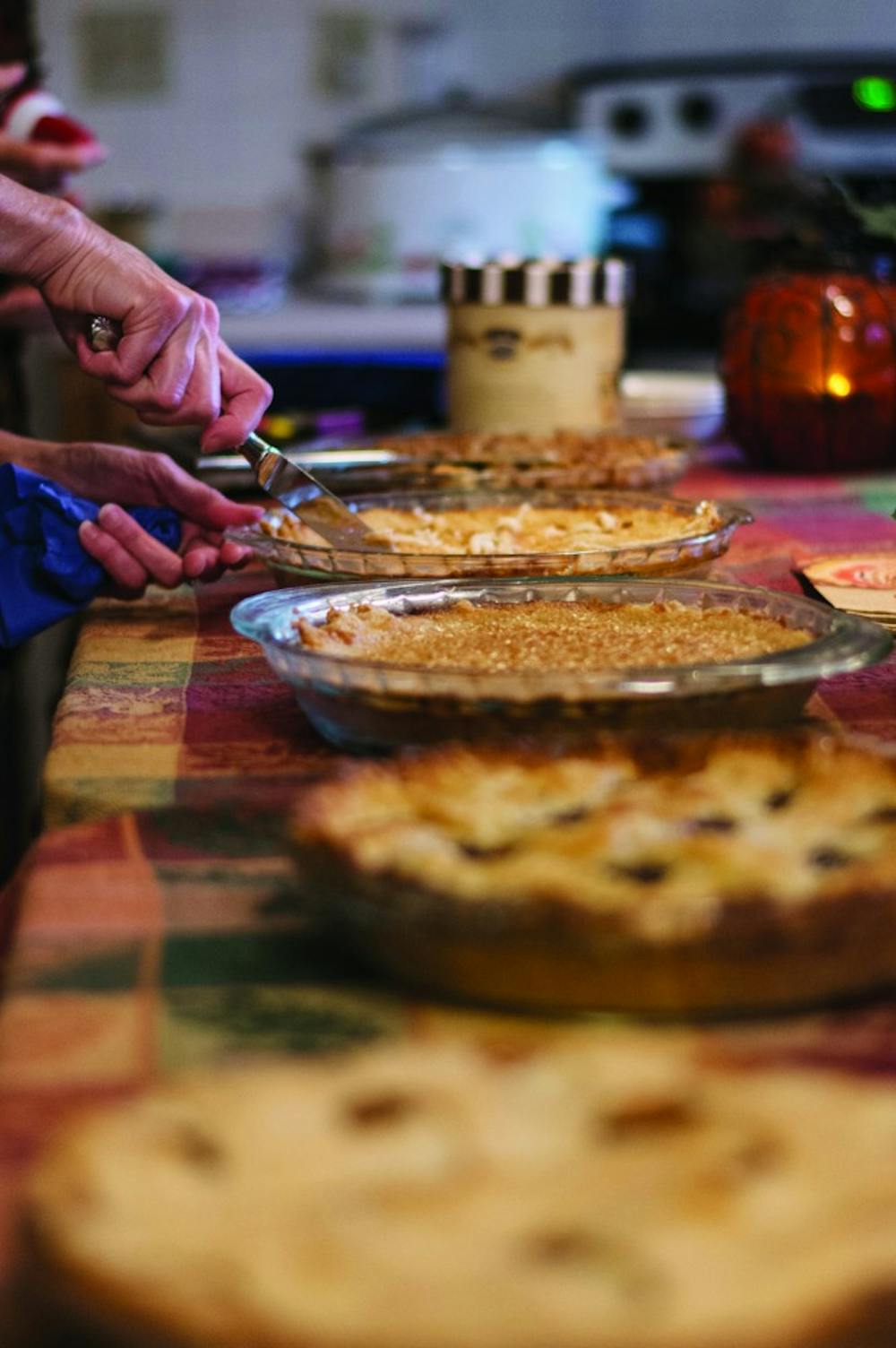Sophomore Jake Tomlinson normally spends Thanksgiving at his aunt’s house in Fishers, Indiana, where his family of 40 people eats fried turkey, watches football and plays pool or air hockey in the basement.
Tomlinson enjoys watching football the most, but his favorite team, the Indianapolis Colts doesn’t usually play on that particular Thursday.
“We root for whoever is not an enemy of the Colts,” he said.
Thanksgiving isn’t just about frying turkeys and watching sports, though. Thanksgiving actually originated as a celebration of a great first harvest season in America.
The pilgrims travelled over to the New World from England to flee religious persecution. They arrived in the winter, which made it difficult for them to settle. Through an alliance with the Wampanoag Native Americans, the pilgrims survived and had a successful first year in Massachusetts, said history professor Nicole Etcheson.
The Europeans and the Native Americans traditionally had days of thanks pointed to a chosen divinity in order to celebrate bountiful harvests, safe arrivals and winning of wars.
The Thanksgiving celebrated today originated as a ritualistic day of thanks to the Christian God. The pilgrims wanted to thank the lord for not only surviving the first winter, but also having a bountiful harvest season.
This holiday occurred in the New England area annually. Thanksgiving was not celebrated nationally until Abraham Lincoln announced a Thanksgiving in response to the Union’s victories at Gettysburg and Vicksburg during the Civil War. Lincoln designated the traditional New England holiday in fall 1863, Etcheson said.
Typical foods on the Thanksgiving dinner table include turkey, ham, mashed potatoes, corn, stuffing and green bean casserole. This variation of food is a combination of foods brought by both the Wampanoag Natives and the English settlers.
The Native Americans brought corn, turkey and green beans to the table — all of which were not present in Europe before the Native Americans introduced them. The Pilgrims brought hogs (ham) and beer, Etcheson said.
Stuffing is also a popular Thanksgiving food. It just so happens to be senior Sydney Chapa’s favorite.
Chapa, like Tomlinson, also spends Thanksgiving at her aunt’s house in Saint John, Indiana. Her family of 30 uses this day to get together and catch up on life. At least, the girls do. She said he boys in her family prefer to watch football.
Chapa would rather watch the Macy’s Thanksgiving Day Parade on NBC while cuddling with her German Shepard Lab, her aunt’s Yorkies and Terriers.
“I mostly hang out with the dogs to be honest,” Chapa said. “The dogs flop to me more than the kids.”
Contact Hannah Gunnell with comments at hrgunnell@bsu.edu.




